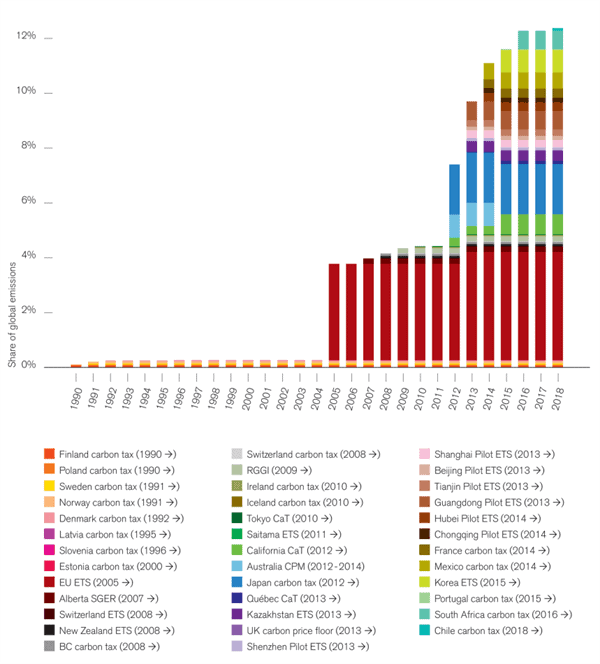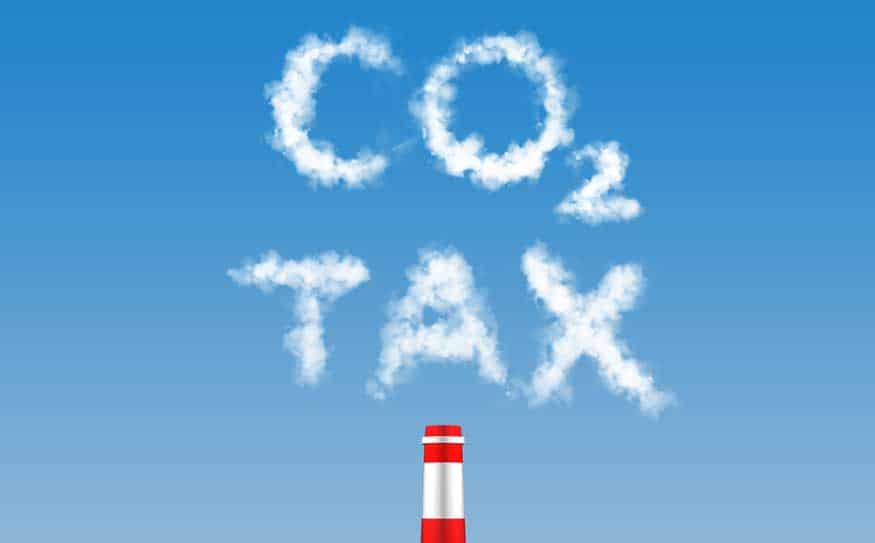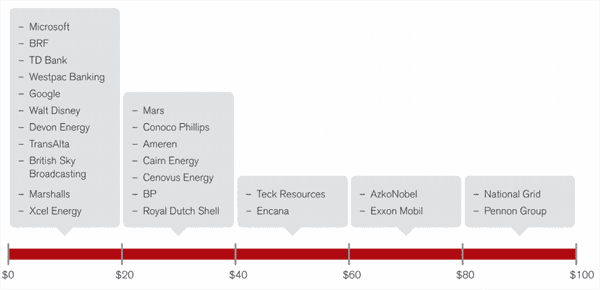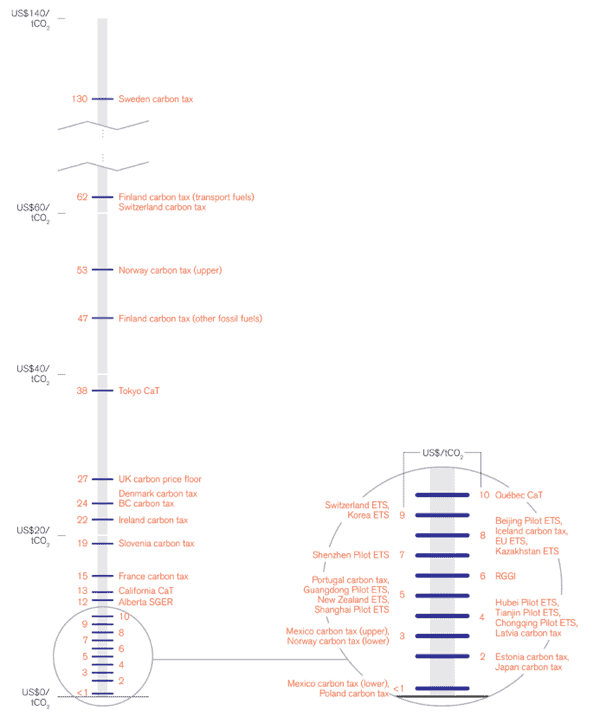According to the World Bank, the total value of carbon pricing schemes – including emission trading schemes (ETS) and carbon taxes – has climbed to $50 billion worldwide, slightly up from the previous year. This despite Australia repealed its carbon pricing mechanism in July 2014, at the lead of prime minister Tony Abbott. In 2004 less than 1% of the world’s emissions were capped or taxed. In 2005 this climbed to 5%, while in 2015 carbon pricing covered around 12% of the world’s emissions according to the World Bank report. Though 50 billion might seem like a lot of money, progress is still slow. When you consider oil and gas is subsidized by $5.3 trillion a year, which basically means governments are paying to pollute, it all sounds like a joke.
The emission trading scheme is designed to reduce emissions across a region, like country or block (the case of the EU) as cost efficiently as possible, by allowing industries covered by the scheme to buy and sell the right to pollute. Each allowance gives the owner the right to emit one tonne of CO2. A coal plant might for instance buy more credits than a less efficient one. Theoretically, the money or some of it would go to fund energy sources that don’t pollute and in time the cap’s ceiling would get lowered until emissions become prohibitively expensive. However, in the EU where the ETS model is most widespread thing haven’t gone as expected, as pointed out by the Carbon Brief. As of 1 April 2015, emissions trading schemes were valued at $34 billion, up from $32 billion the previous year.
There are also carbon taxes, which the World Bank currently values at $14 billion. The map below shows where carbon is being priced around the world, covering a carbon dioxide equivalent of 7 gigatonnes.
Despite Abbott’s government in Australia renounced its cabon pricing scheme, which used to cover 60% of the country’s emissions at a price of around $20 per tonne of carbon dioxide, the value of carbon markets has steadily increased. The latest country to follow the ETS model is South Korea, which joined on 1 Jan. 2015. On the same day Portugal implemented a modest carbon tax which valued carbon emissions at $5 per tonne. The biggest progress was registered in Quebec and California which extended their cap and trade scope to include transportation emissions as well, increasing coverage from around 35% to 85% of their total greenhouse gas emissions. South Africa is expected to implement a carbon tax in 2016, while Chile has one coming online in 2018. China, which is currently experimenting with its own cap and trade system Chongqing, wants to implement a nation-wide scheme by 2016.

Share of global emissions covered by carbon pricing initiatives, in 39 nations and 23 subnational jurisdictions. Source: World Bank Carbon Pricing Watch 2015
Some of the world’s major corporations are also trying to make this own cuts, mandated or not by government policies in the areas in which they operate. The graph below shows how some companies price carbon in their own internal private system.
What’s the true price of carbon, though? Economists have long debated, and estimates vary wildly from $40 per tonne of equivalent carbon dioxide to $150. It’s difficult because you need to factor in a lot of things, like public health, damage to crops with all its ramifications, environmental cataclysms and so on. For instance, what would be fair carbon tax that might avert a 4 degrees Celsius warming by 2100 (10% chance)? This kind of warming would be disastrous to say the least, so the carbon price might be a lot more than 150 bucks.
While we’re still far from employing a fair carbon tax or trading scheme, I’m happy to hear that some progress is made at least. Before 2005 no government had any carbon tax or ETS of any kind, now 39 nations joined. This might soon climb to 73 countries and more than 1,000 businesses by 2018.













